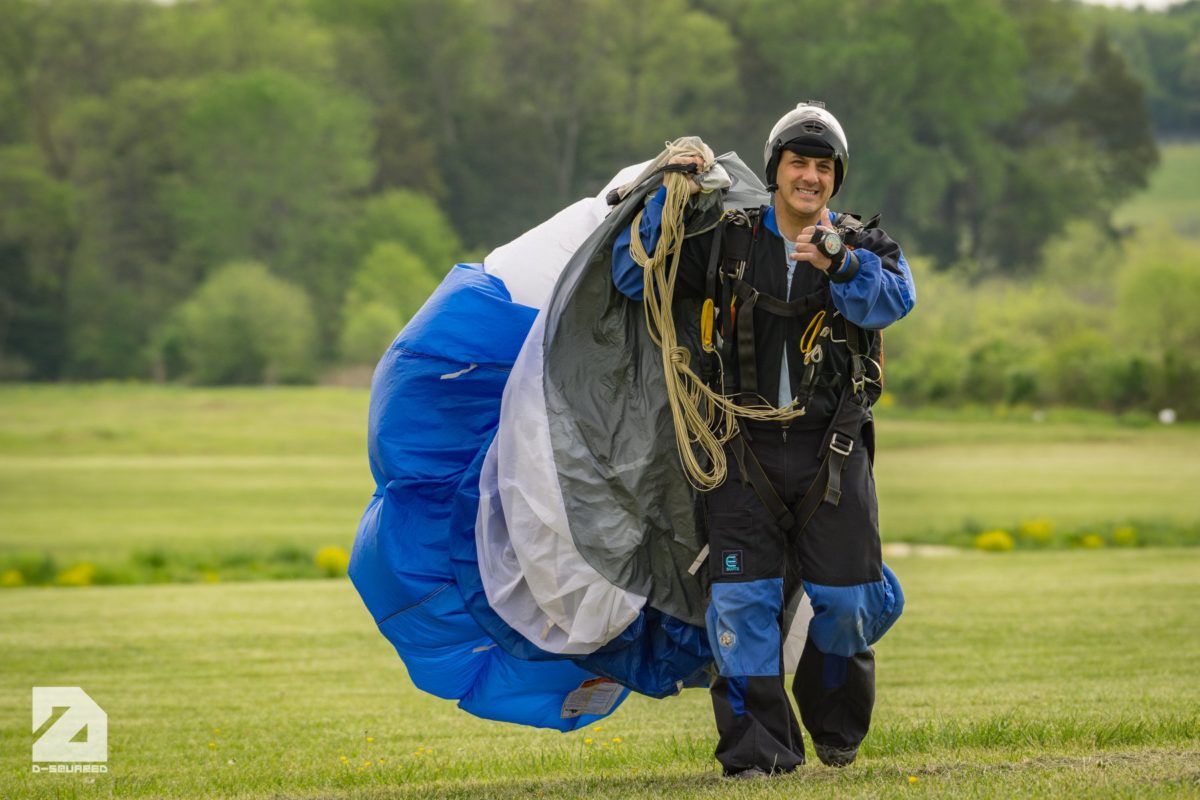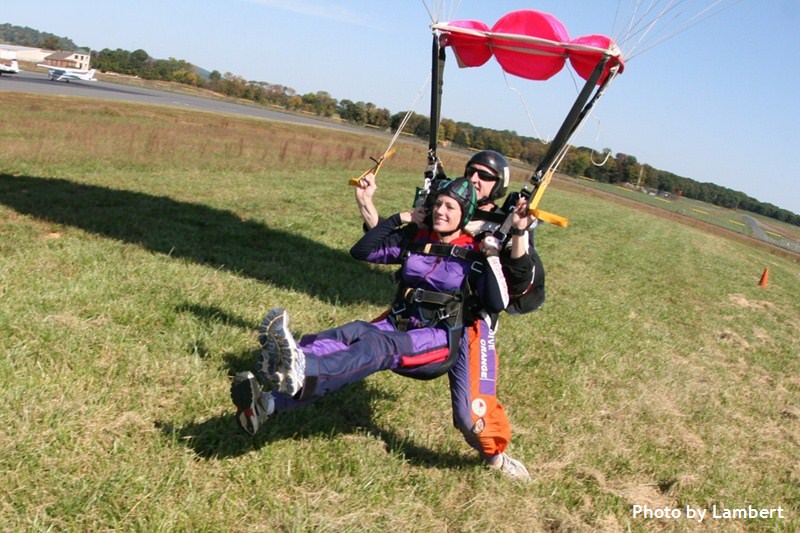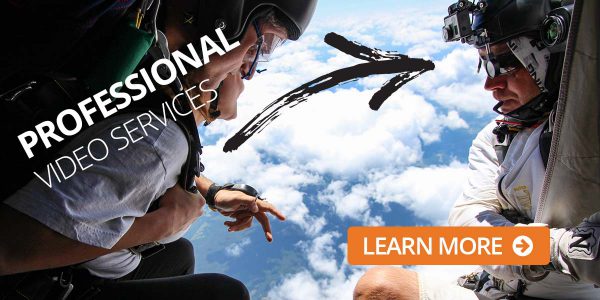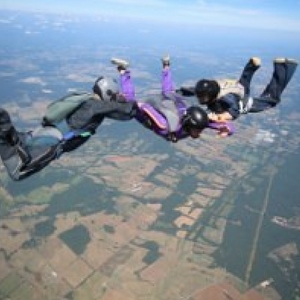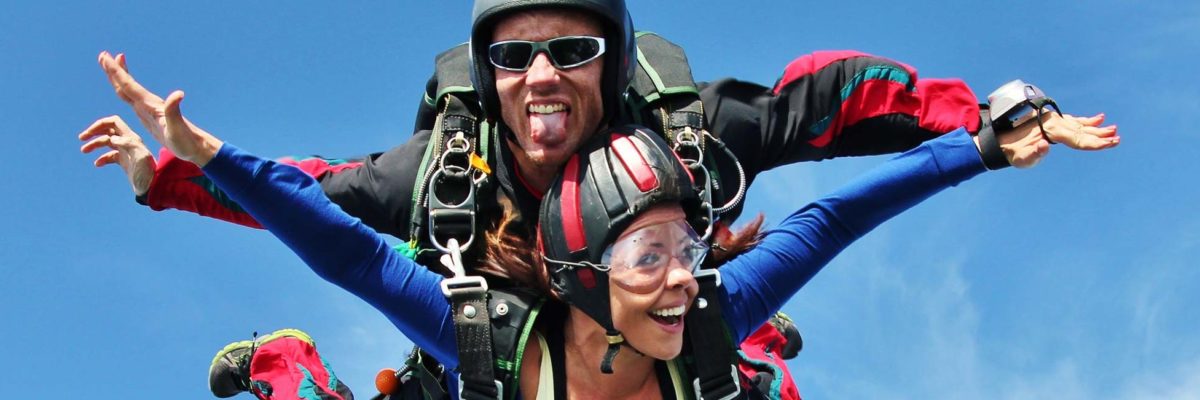
The Tech Behind Skydiving
Thursday, October 11, 2018
- Skydive Orange
- 10/11/18
- 0
- General
Many assume the extent of skydiving technology was figuring out a material that would withstand being tossed to the winds at 120mph (turns out nylon works best), but this barely skims the surface! Skydiving equipment engineers are exceptional innovators driven by a passion to improve a sport they love. You better believe if they can think it or dream it, they try and create it. Because of such brilliance, leaps and bounds are made each year when it comes to skydiving gear. We’re pretty proud of all the neat technology used to help create more advanced skydivers and to ensure safer skydives. Check out these 5 examples of the technology behind skydiving.
CYbernetic Parachute RElease System (CYPRES) Automatic Activation Device
We are currently experiencing the safest era in skydiving’s history to date, and this mac daddy of skydiving innovation is one of the reasons why.
Nearly since skydiving’s inception, engineers toyed with the idea of Automatic Activation Devices or AADs. It was a seemingly simple premise. Skydivers wanted a device that would ensure there was a canopy above their heads in the event something was amiss, or they were unable to deploy their parachute themselves. AADs were designed to fire the reserve parachute at a preset altitude or after a preset time, but like many things, there were some SERIOUS growing pains. Early models from other companies were clunky, unpredictable pieces of equipment that caused more issues than they solved and often did more harm than good. Over time, jumpers became wary of AADs, that is, until, inventor Helmut Cloth committed to creating a device that would operate more efficiently.
CYPRES AADs are unique because they use a specialized ground calibration feature that can even adjust based on air pressure and weather to accurately determine altitude and speed. Honestly, these spiffy computers are life-savers.
FLYSIGHT
Two disciplines are consistently growing in popularity in skydiving: swooping and wing suiting. The FLYSIGHT is a piece of skydiving technology designed exclusively with these disciplines in mind. So, what is it exactly? The FLYSIGHT is a GPS receiver that tracks a wingsuit pilot or canopy pilot’s glide ratio, horizontal speed, or vertical speed.
When a jumper lands from a skydive, they can review the data captured by the FLYSIGHT and view a graph with plots between a vertical axis that marks two parameters: glide ratio, horizontal speed, vertical speed or elevation and a horizontal axis of either time or distance. This allows the skydiver to measure how much forward movement is achieved in a given vertical drop. On the jump, the FLYSIGHT produces an audio tone when a jumper changes their body position. These aural cues help a skydiver to remember what exactly they were doing at each point when they review their graphed data. Whether a skydiver is flying a wingsuit or working on their canopy flight, a FLYSIGHT is a great learning tool to help develop their skills.
Audible Altimeter
Humans respond quickly to aural cues. Think about how you immediately react when a fire alarm sounds. In a similar manner, aural cues are very helpful in orienting and keeping skydivers aware of their altitude in distracting or potentially dangerous situations. This is the primary premise behind the audible altimeter.
Most audible altimeters have 3 selectable warning altitudes. The first alarm is often used to indicate to a skydiver that it is time for the group skydive to end. It is important to create enough distance between jumpers before their parachutes are deployed, so though, ‘parting is such sweet sorrow,’ the first alarm means it is time to leave.
The second alarm is often used to indicate when it is time to deploy the parachute. So, alarm one—leave the group skydive, alarm two—time to deploy the parachute, and what about alarm three?
The third alarm is a high-pitched siren that says HEY you have reached an altitude where it is imperative you make a decision and make it quick. This alarm comes in handy if for some reason you have been “distracted” either by other jumpers or another issue.
Even in the sky, distractions can abound. The audible altimeter helps skydivers keep their heads in the game!
Color Altimeter
Altitude is one of the most important things to be aware of on a skydive. This is why a lot of skydiving technology focuses on various ways to quickly and efficiently indicate altitude to skydivers. One of the most recent innovations in altimeters is the peripheral vision LED skydiving altimeter. Like the audible altimeter, this piece of skydiving equipment is used by a skydiver to easily assess their altitude, but this neat gadget doesn’t display numbers or use a tone.
This altimeter provides continuous and immediate feedback of your altitude via the hue of a light in your peripheral vision. Wait till you see a helmet or jumper sporting this skydive technology, it looks downright futuristic!
Burble Software
Another game changer in the skydiving industry was the creation of a unique booking software and manifest system called Burble Software. By using a phone application, licensed skydivers can reserve slots on the aircraft for themselves and their friends.
Another particularly notable aspect of the burble software system is a GPS tracking feature. Ideally, skydivers would land back on the drop zone or the landing area where they took off from every time. Unfortunately, every now and again, something doesn’t go quite as planned, and a jumper may have to land in an alternate landing area. With the burble app, it only takes the click of a button for the skydiver to notify the drop zone of their exact coordinates and a map display of their location whether it be a farmer’s field or a front lawn. The jumper can also attach a message letting the office know if they are okay, need a ride, are close enough to walk back. Cool, right?
The technology behind skydiving is a whole lot more than meets the eye. Want to check it out for yourself, we’d love to have you visit Skydive Orange and see it all first-hand!
The largest tandem skydiving center near Northern Virginia, Washington D.C. and Maryland.
Copyright © 2024, Skydive Orange, All Rights Reserved.
DropZone Web Design & Marketing by Beyond Marketing, LLC
